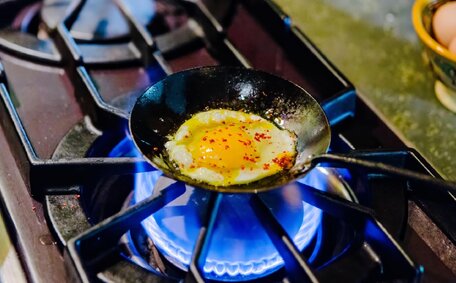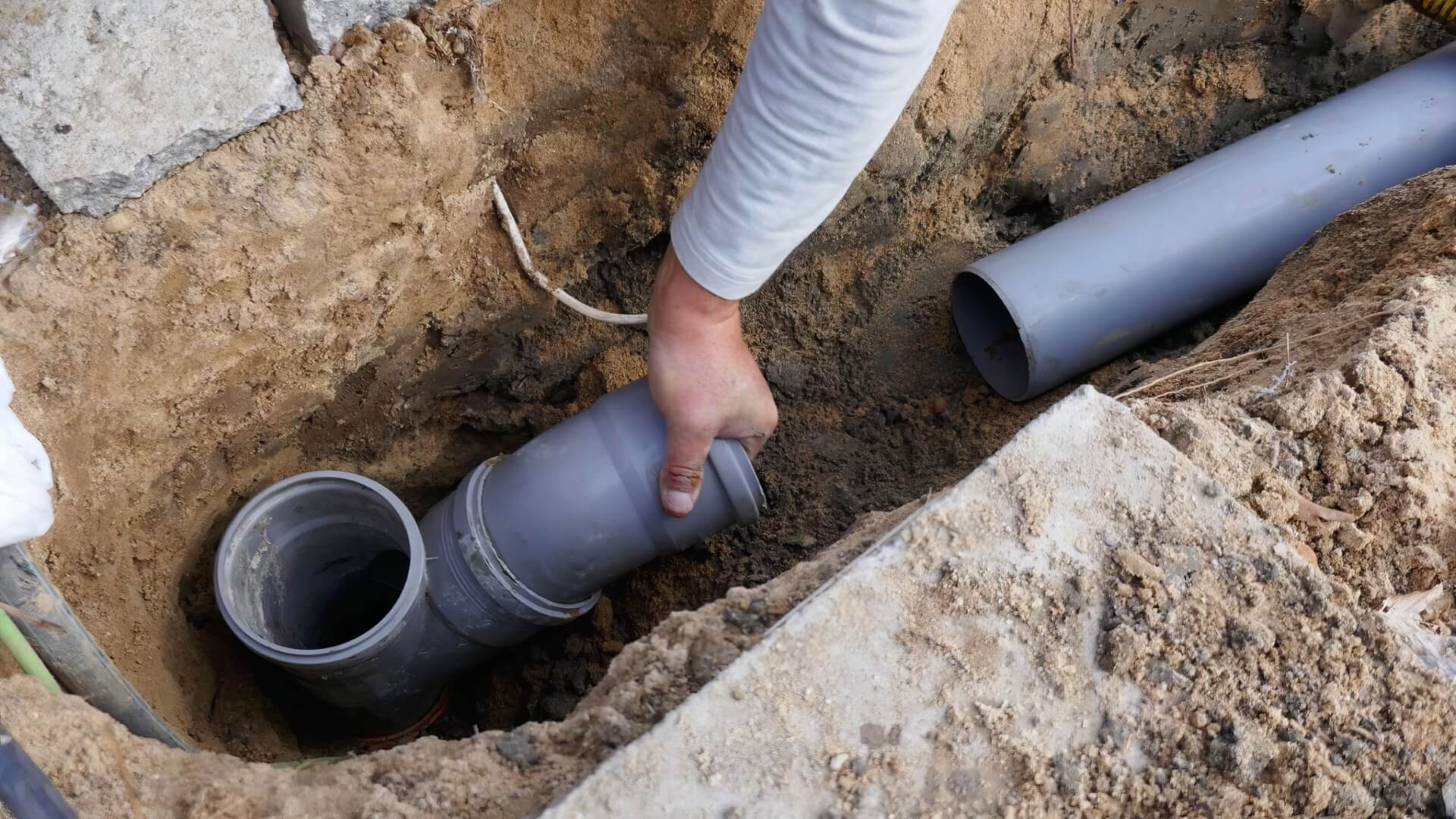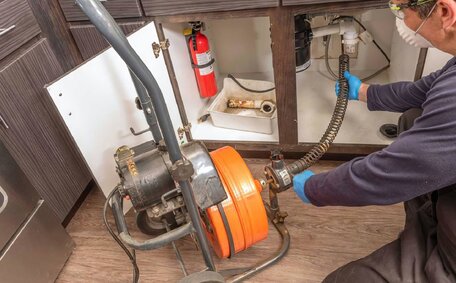What is a mixing valve?
A mixing valve, also known as a tempering valve or thermostatic mixing valve (TMV), responds to water temperature fluctuations, ensuring a safe and consistent blend before delivery to fixtures. Mixing valves blend cold and hot water to deliver a constant, safe temperature, preventing scalding incidents.
Mixing valves incorporate a thermostatic element that reacts to water temperature variations, These valves sustain a predetermined water temperature. They are commonly used in systems requiring constant hot water temperatures, for example:
- Your shower and baths to prevent scalds
- Hand wash basins to meet health and safety regulations without compromising your hot water system’s temperature
- Some sinks and laundry tubs
Unlike a tempering valve that combines water to achieve a set temperature, series mixing valves are becoming more common, as they actively monitor and have no delay in adjusting levels, making them more efficient than tempering, in response to supply changes. Proper installation and regular testing are pivotal, ensuring the mixing valve reliably delivers hot water at a safe temperature.
Why are mixing valves important?
Hot water tempering valves, a type of TMV, are crucial in minimising scalding risks by ensuring safe water temperatures. By blending cold and hot water to a pre-selected temperature, mixing valves deliver a regulated flow to taps and showers, catering to all users.
Key reasons mixing valves are essential include:
- Scald prevention - Mixing valves limit water temperatures to a maximum of 50 degrees Celsius, in line with AS/NZS 3500, mitigating the risk of scalds.
- Legionella control - Water temperatures between 20-50°C promote Legionella growth. Mixing valves maintain water above 50°C.
- Meeting regulations - The ASSE 1070 standard covers mixing valves to safeguard users. Installing mixing valves meets compliance codes.
- Temperature control - Thermostatic mixing valves control water temperature to ensure a steady balance, preventing hot water from coming out at extreme temperatures, providing consistent output despite supply fluctuations.
- Catering for all users - Mixing valves allow water to be safely used by users of all ages and abilities.
Professional installation and testing are therefore critical, as TMVs provide a vital defence against scalding and bacterial contamination in domestic water. Your system’s mixing valve assures a stable, secure temperature for use in bathing, cleaning, and consumption.
Types of mixing valves
There are three main types of mixing valves:
- Tempering valves - Mix hot and cold water to a preset temperature. Simple, cost-effective option with reliable water output. Mainly used for non-critical needs like laundry tubs.
- Pressure balancing valves - Maintain water flow despite pressure fluctuations. Reduce risk of temperature spikes. Often used in showers.
- Thermostatic mixing valves (TMVs) - Actively monitor water temperature and adjust mixing to maintain a safe, consistent output temperature. Best option for bathing, hand washing etc.
Distinct differences between tempering valves and other types are:
- Threeway mixing valve solutions apply a mechanical thermostat while TMVs use a valve thermostatic element to manage the heating system temperature.
- Threeway mixing valves ensure balanced pressure between hot and cold supplies, enhancing valve performance, which is essential for efficient operation.
- Valves can rapidly respond to hot or cold water interruptions, offering reliable temperature control across a wide range.
- Tempering valves mix cold water into hot where hot water of a desired temperature is required.
Collaborating with a professional plumber is vital to ensure the correct type of mixing valve is installed properly, managing your water system effectively, particularly in applications like space heating.
Manual vs. thermostatic mixing valves
The primary difference between manual tempering valves and thermostatic mixing valves (TMVs) lies in their approach to monitoring and controlling water temperature.
Manual tempering valves use a mechanical thermostat to passively mix water to a preset temperature only. They have no inbuilt capability to actively respond to supply fluctuations.
In contrast, thermostatic mixing valves feature a temperature-sensitive thermostatic element that continually measures temperature mixed water and adjusts mixing levels to maintain a constant temperature and safe output.
Consequently, TMVs offer enhanced scald protection by swiftly adapting to shifts in water temperature and pressure. Manual valves lack dynamic temperature control and can also used to deliver dangerously hot water if supply conditions vary.
Considerations for selecting mixing valves include:
- TMVs self-regulate to turn off if supply fails, ensuring safety and consistency at the same time; hence, the valve must always be in optimal condition. Manual valves will keep flowing.
- TMVs can maintain a more accurate temperature control within ±3°C, compared to basic manual valves which allow a variance of ±5°C.
- TMVs are mandatory under AS 4032 for high-risk applications, ensuring the water can achieve a safe temperature for aged care facilities.
Due to their advanced temperature control and smart technology, thermostatic mixing valves offer enhanced performance and reliability compared to basic manual tempering valves in various settings.
Plumbing code requirements for mixing valves
Installing a TMV in hot water delivery systems is crucial to comply with plumbing regulations and ensure a safe hot water supply. Essential codes and standards guiding tempering valve installation focus on safely managing water temperature, as specified in industry safety standards:
- AS/NZS 3500 - States that bathing and general ablution areas must have mixing valves to deliver hot water no higher than 50°C.
- AS 4032 - Mandates thermostatic mixing valves for applications where high risk settings like aged care are involved.
- ASSE 1070 - Performance requirements for water temperature limiting devices like mixing valves.
- AS/NZS 2792 - Installation and testing criteria of mixing valve tmv and tempering valves.
Certified valve installation in line with these codes assures compliance with thermostatic mixing regulations, enhancing safety. Properly installed valves also bring added safety and functionality benefits:
- Preventing scalds by capping the amount hot water temperature can reach, thereby avoiding higher temperatures.
- Allowing higher hot water tank settings to protect against Legionella.
- Meeting disability access standards.
- Reducing risks for vulnerable groups like children and ensuring they receive hot water without excess heat.
The use of properly tested and tagged mixing valves that meet Australian Standards is crucial to mitigate hazards and ensure compliance, especially considering the strict penalties for non-conformity.
3-port vs. 4-port mixing valves
Mixing valves are designed to adequately flow hot cold water in either 3-port or 4-port configurations. The main difference lies in the number of water inlets and outlets:
- 3-port mixing valves have 2 inlets (for hot and cold water) and 1 outlet that delivers blended water.
- 4-port mixing valves have 2 inlets and 2 outlets - 1 for mixed water delivery and one as a return water line back to the water heater.
4-port valves, ideal for situations where temperature hot water is critical and there are minimal interruptions such as flushes toilet in hotels and hospitals, offer superior control by balancing system pressures. They prevent temperature fluctuations if a tap is suddenly opened or closed.
Your choice of valve should be guided by your specific plumbing needs and application context:
- 3-port valves are ideally suited for most domestic hot water systems, such as those for showers, or for smaller commercial environments.
- 4-port valves suit large systems with frequent draw-offs like commercial kitchens or medical facilities.
4-port TMVs enhance stability and minimise temperature spikes by regulating hot and cold water pressures and flows. But for simpler needs, 3-port valves adeptly mix hot cold water together in the supply.
Aerated vs. laminar flow faucets
Aerated and laminar flow faucets differ in water flow control, which affects mixing valve performance:
- Aerated faucets mix air into the water stream to restrict flow. Not suitable for mixing valves as air injection alters temperature readings.
- Laminar faucets use streamlined internal chambers to smoothen water flow. Maintains temperature stability for reliable operation between two water sources.
Key differences that affect mixing valve integration:
- Aerated faucets compromise temperature control. Laminar faucets optimise mixing valve water accuracy.
- Laminar flow rate is around 4-6 L/min depending on water pressure. Aerated faucets use much water, averaging 9 L/min.
- Aerated spray flows inconsistently. Laminar flow is smooth, ensuring consistent temperature water blending.
Laminar faucets are the optimal choice for pairing with mixing valves due to their controlled flow and dependable temperature regulation. Aerators can disrupt readings, so laminar designs are preferred for safety and efficiency.
When to install or replace a mixing valve
There are several telltale signs indicating it may be necessary to install or replace a faulty mixing valve:
- Fluctuating temperatures of hot water coming out from your taps or shower - This suggests your existing mixing valve cannot maintain a stable blended water temperature.
- Risk of scalds due to water being too hot - If output temperatures exceed 50°C, your system lacks adequate tempering.
- Low or no flow when a tap is turned on - Could mean a blocked or damaged mixing valve requiring replacement.
- Leaking valve body - Signals wear and tear necessitating valve replacement.
Additional reasons to assess your mixing valve include:
- Age - Mixing valves typically last longer, around 10 years before needing replacement.
- Your water heater upgrade - Installing a new water heater, booster or pipework necessitates a compatible new mixing valve for optimal performance.
- Renovations - Upgrading bathrooms or laundries requires re-appraising mixing valve type and placement.
Preventative servicing of your mixing valves approximately every 5 years promotes continual protection; for assistance, consider our customer support options. Your licensed plumber can test and validate the performance of your mixing valves for accuracy, or you may seek further guidance from our customer team.
DIY vs. hiring a professional
For the installation or repair of mixing valves, recognising the value of professional expertise is paramount over attempting to reduce plumbing expenses. However, there are several compelling reasons to hire a professional with tmv licence instead:
- Expertise - Trained professionals proficiently select, install, and test mixing valves to meet Australian Standards.
- Compliance - Inadequate DIY installations typically violate plumbing codes and may result in fines.
- Safety - Wrong installations can lead to inadequate protection from scalds and Legionella bacteria.
- Calibration - The intricate calibration needs of mixing valves generally exceed the scope of DIY skills.
- Warranties - Producer warranties are often void if valves are amateurly installed.
- Efficiency - Professionals complete work accurately first-time compared to potential DIY trial and error.
Ultimately, safety, compliance, and lasting performance are key, endorsing professional installation as the best practice for this essential plumbing component.






